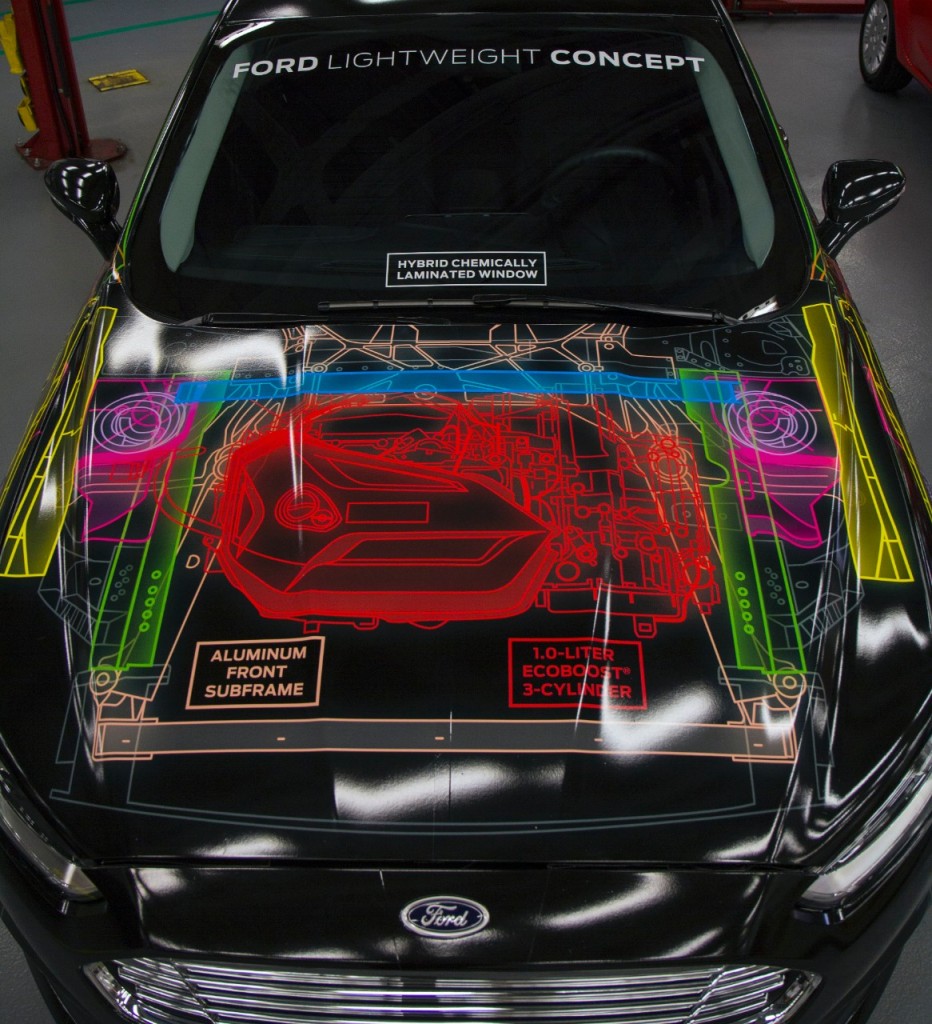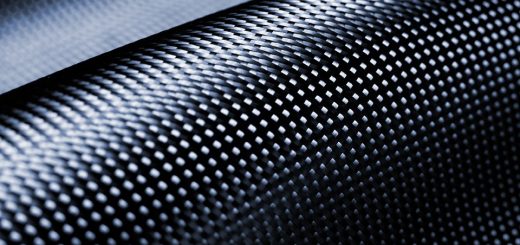Quite notoriously, Ford has been on a path to lightweighting (reducing the weight of) its vehicles. One just needs to look to The Blue Oval’s duo of all-new vehicles coming to market this year for proof: although neither has launched yet, the 2015 Mustang is expected to be lighter than the outgoing model, while the 2015 F-150 will shed as much as 700 pounds. Taking the lightweighting concept even further in a new concept car.
Unveiled in early June, the Ford Lightweight Concept vehicle uses advanced materials to explore future weight-reduction solutions, which could improve performance and fuel efficiency while reducing carbon dioxide emissions. According to Ford, the vehicle represents the latest phase of its “research into developing sustainable technology solutions that are affordable for consumers and can be produced in large volumes across the product lineup.” In other words, this isn’t pie-in-the-sky vaporware, but rather production- or close-to-production stuff.
“Consumers today want better fuel efficiency, but they also want more technology and features in the car, which usually adds weight to the vehicle,” said Raj Nair, Ford group vice president, Global Product Development. “A focus on light-weighting will be fundamental to our industry for years to come, and we are investigating many advanced materials applications as possible solutions for weight reduction in our vehicles.”
To the consumer, a lighter vehicle is valuable for several reasons, as it brings about greater capability such as towing and hauling that’s vital for pickup trucks along with improved vehicle dynamics such as acceleration, handling, and braking — all with improved gas mileage.
For the Lightweight Concept, Ford engineers reduced weight by incorporating advanced materials into the entire design of the vehicle, including powertrain, chassis, body, battery and interior features such as seats. The concept represents Ford’s most comprehensive blend of advanced materials yet in a single vehicle, including strategic application of aluminum, ultra-high-strength steels, magnesium, and carbon fiber. The results are rather impressive: the midsize Ford Fusion-based Lightweight Concept weighs as little as a subcompact Ford Fiesta.

The research vehicle was developed with the U.S. Department of Energy’s Vehicle Technologies Program and Cosma International — a subsidiary of Magna International — to illustrate long-term potential of light-weighting solutions. Ford says that Magna’s design and development of the multi-material body-in-white, closures and chassis components are a significant contribution in light-weighting the concept vehicle.
“Our goal was to investigate how to design and build a mixed-materials, lightweight vehicle that could potentially be produced in high volume, while providing the same level of safety, durability and toughness as our vehicles on the road today,” said Matt Zaluzec, Ford technical leader, Global Materials and Manufacturing Research. “There’s not a one-size-fits-all approach to light-weighting. The Lightweight Concept gives us the platform to continue to explore the right mix of materials and applications for future vehicles.”

Ford’s quest for lighter vehicles closely follows other industries that have either diminished the size of their offerings or incorporated advanced materials to decrease mass. The consumer electronics industry, for instance, has significantly decreased the weight and size of personal devices such as cellphones, tablets, and personal computers. Other industries to incorporate lighter-weight advanced materials to achieve greater fuel economy, speed and performance include aviation and aerospace industries, which make extensive use of composites structures and mixed materials such as aluminum and carbon fiber. Meanwhile, the rail industry has made extensive use of lightweight materials to reduce weight in high-speed and bullet trains, and the heavy truck transportation industry has incorporated lightweight materials including aluminum and high-strength steel to improve fuel efficiency.














No Comments yet